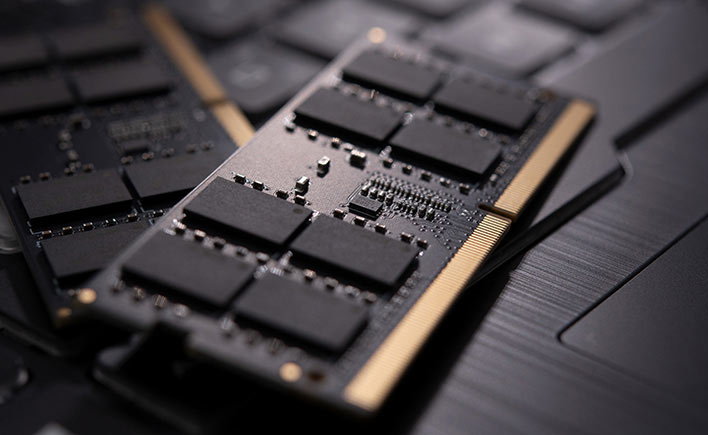Teamgroup's First DDR5 Memory For Next-Gen Laptops Zips Along At 4800MHz

Almost all of the chatter centered on DDR5 memory so far has been in reference to full-size modules for future motherboard applications. That is all fine and dandy, especially with Intel set to release its Alder Lake-S lineup later this year, and AMD on track to deliver Zen 4 around the same time. But what about laptops? Those will be getting DDR5 upgrades as well, and Teamgroup is on top of it with a newly developed DDR5 SO-DIMM.
"Paying attention to the needs of not only desktop but also notebook and mini PC users, Teamgroup has successfully created a DDR5 SO-DIMM and is expected to be the first to take Intel and AMD's new platform validation tests," the company says.
Granted, there are no consumer options for DDR5 right now, either on the desktop or in the laptop space. But that will change by the end of the year. As such, Teamgroup said it December that it was already in the process of validating its first run of DDR5 modules for the desktop, and now it has developed a SO-DIMM version.
SO-DIMMs are shorter modules that are commonly used in notebooks and mini PC form factors. At this early stage of development, Teamgroup says its first DDR5 SO-DIMM module resembles its U-DIMM counterpart—a single module has a capacity of 16GB, and races along at 4,800MHz. And both operate at a lower 1.1V.
"Teamgroup emphasizes that the product specifications it has published are from successfully developed products, and it will continue to work closely with motherboard manufacturers to achieve higher specifications. The company hopes to provide consumers with a wide range of specifications and stable compatibility from the very beginning of its product launches," Teamgroup adds.
Indeed, faster speeds will manifest in the DDR5 space. Adata, for example, recently announced it has been collaborating with Gigabyte and MSI on upcoming DDR5 modules, and said it expects to achieve speeds of up to 8,400MHz.
Outside of the raw speed, DDR5 is notable because it features on-die ECC (error correcting code), a feature that is typically reserved for data center memory. The sparse support and availability for ECC in the consumer sector was the basis for a recent rant by Linus Torvalds, the creator of Linux, who blamed the situation on Intel. But it will all be moot when DDR5 arrives.

